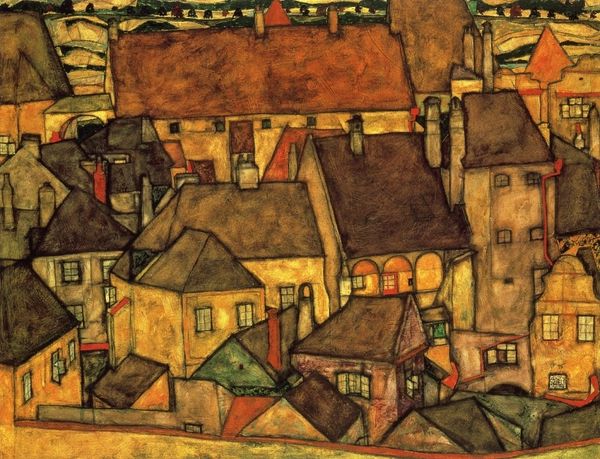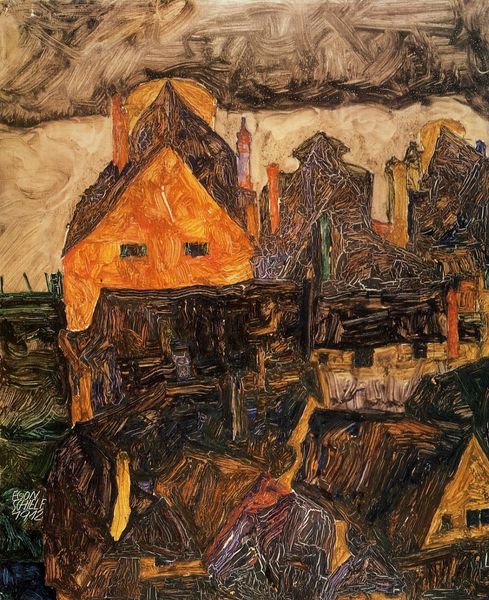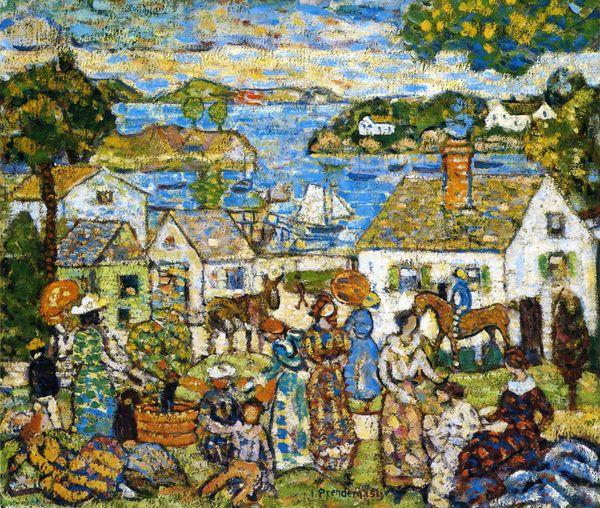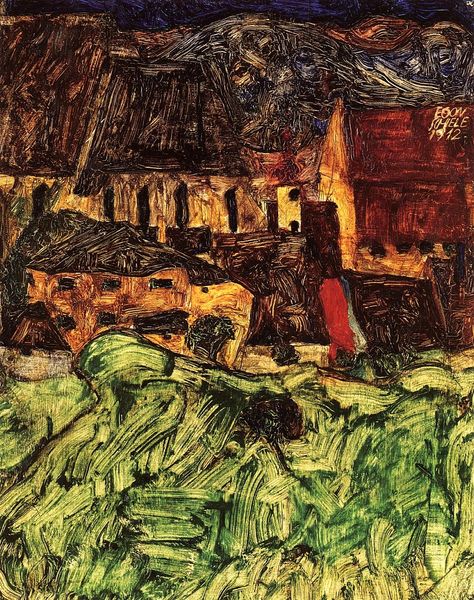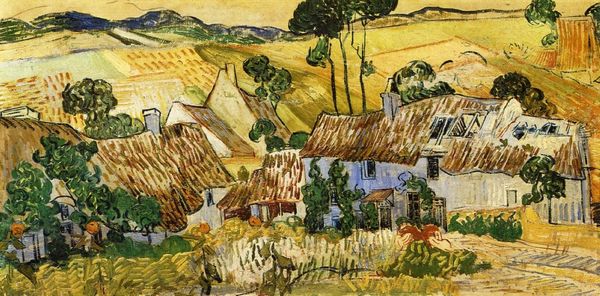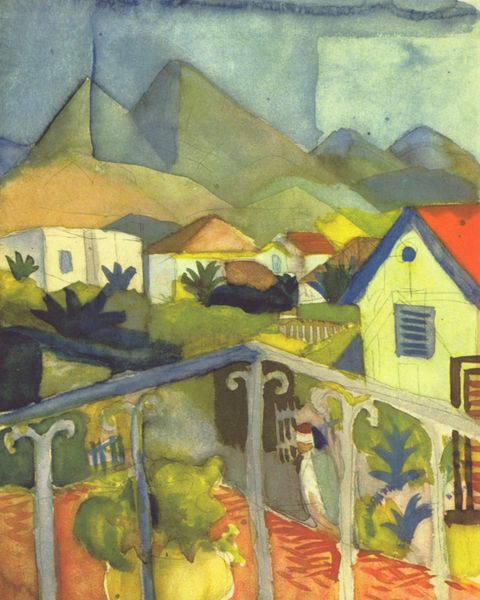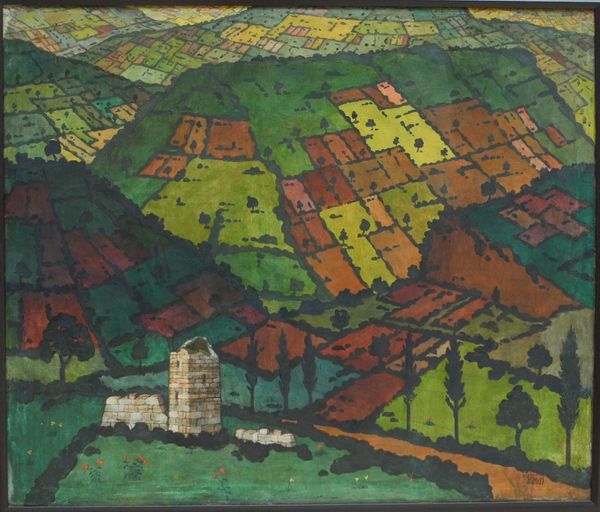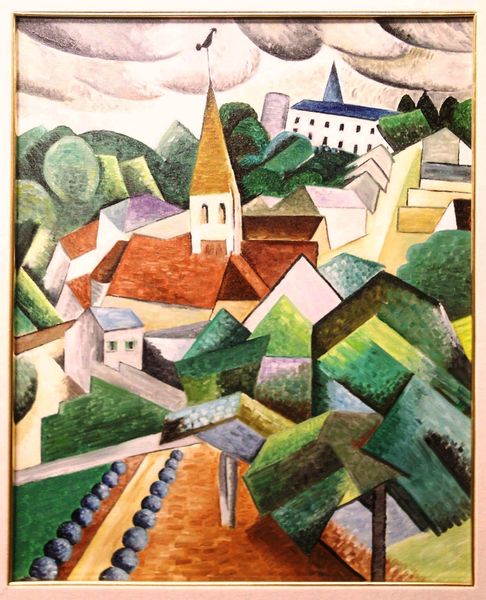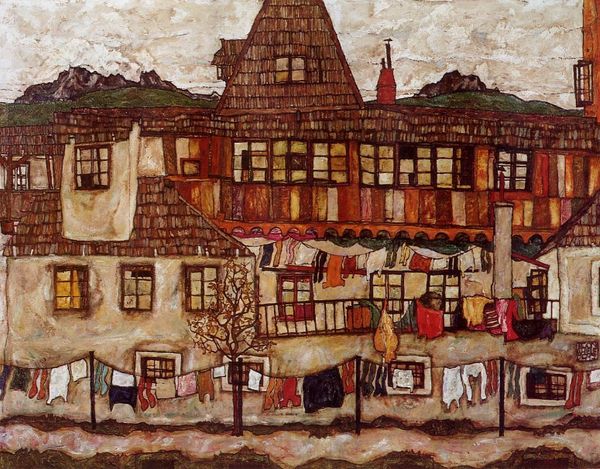
painting, oil-paint
#
tree
#
cliff
#
painting
#
oil-paint
#
landscape
#
house
#
figuration
#
rock
#
geometric
#
expressionism
#
naive art
#
cityscape
#
modernism
#
watercolor
#
building
Dimensions: 110.5 x 141 cm
Copyright: Public domain
Imagine finding yourself on a cobbled pavement in a narrow, winding street. You are surrounded by the quaint architecture of a medieval city – Krumau, South Bohemia. The town now known as Český Krumlov was the subject of this townscape by the Austrian Expressionist painter Egon Schiele (1890-1918). ️ Schiele painted the ‘Landscape at Krumau’ in 1916, when he was stationed in the town after being summoned for military duty. Looking at this charming image, it’s easy to forget that the First World War was raging on during its creation. Could Schiele have been searching for a sense of escapism? ️ The artist has emphasised the mismatched buildings and crooked architecture to create a homely feel. The construction feels pleasantly imaginative, almost childlike – yet it’s based on the real landscape. The higgledy-piggledy shapes of the houses are reflected in the winding form of the Vltava River, which runs across the left side of the canvas. Here, Schiele has used angular brushstrokes to give a sense of vibrant energy. He uses a rich palette of contrasting colours – the lush green landscape compliments the warm orange rooftops. The urban and the rural are shown together, suggesting a connection between the natural and manmade. The perspective of the landscape is far from traditional – the town is depicted from a bird’s eye view, so the viewer looks down over the city. This perspective lends the painting a modern feel, and is typical of Schiele’s experimental artworks. The comfortable and charming tone of this painting is unlike Schiele’s other landscapes, which often emphasised the darkness of cities using gloomy colour palettes. ‘Landscape at Krumau’ was seized by Nazis in 1938, two decades after the artist’s death. It was sold for a record £12 million in 2003.
Comments
No comments
Be the first to comment and join the conversation on the ultimate creative platform.
